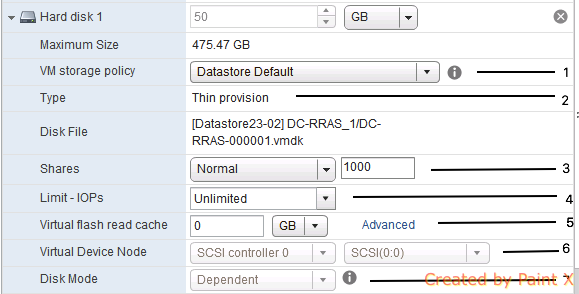In my previous post, I have talked about Virtual Machine Storage Policies.
In this post, we"ll be talking about Different types of disk provisioning:-
In this post, we"ll be talking about Different types of disk provisioning:-
There are 3 different types of disk provisioning:-
- Thin Provision
- Thick Provision: i)Eager Zeroed
- ii) Lazy Zeroed
By default, a Virtual Machine is Thick Lazy-Zeroed in case of Block-Level storage. You can change the type of disk provisioning at the time of creating a VM in Block-Level Storage. Now I"ll talk about the three types:-
1. Thin Provisioning:- Allocation and Zeroing of blocks are done on demand upon the first write to block. The file blocks are zeroed out when blocks are allocated. File block allocation will be dynamic i.e non-contiguous. Mostly used in Cloud environments or automated infrastructures where provisioning required will be fastest. This now defaults in case of Virtual SAN.
2. Thick Provision: i)Eager Zeroed:- File blocks allocated are allocated and Zeroed at the time of vmdk(Disk) creation. In this blocks will be fully allocated & will have highest chances of contiguous file blocks allocation. It will be taking more time during creation.
3. Thick Provision: ii) Lazy Zeroed:- Blocks are fully preallocated but blocks are zeroed out when each block is first written to. It will be faster than Thick Provision Eager Zeroed. Chances will be higher of contiguous file block allocation.
There is a topic of debate when to use Thick Provision Eager Zeroed and When to use Thick Provisioned Lazy Zeroed. There's an interesting topic available Eager thick vs Lazy thick disk performance


















